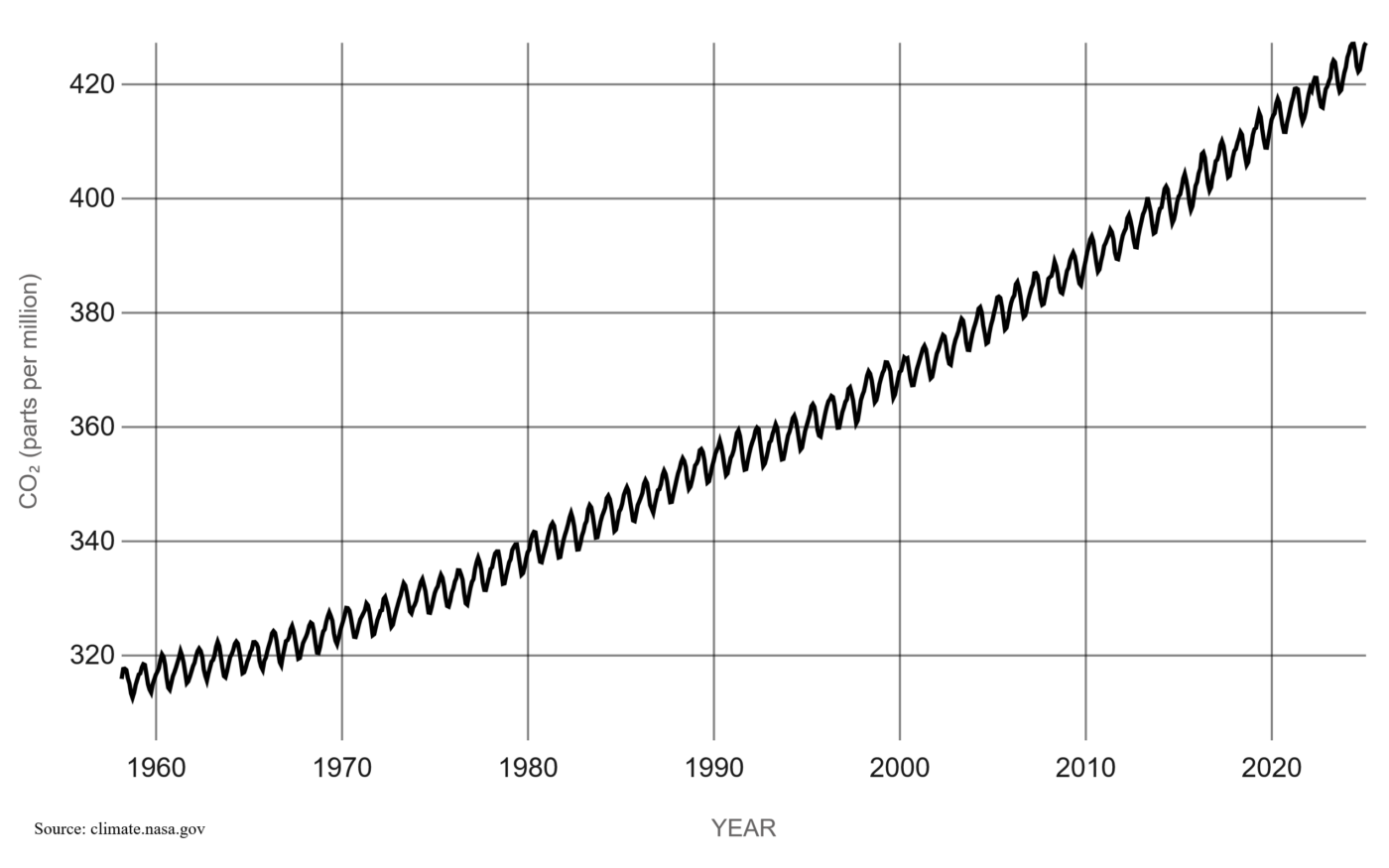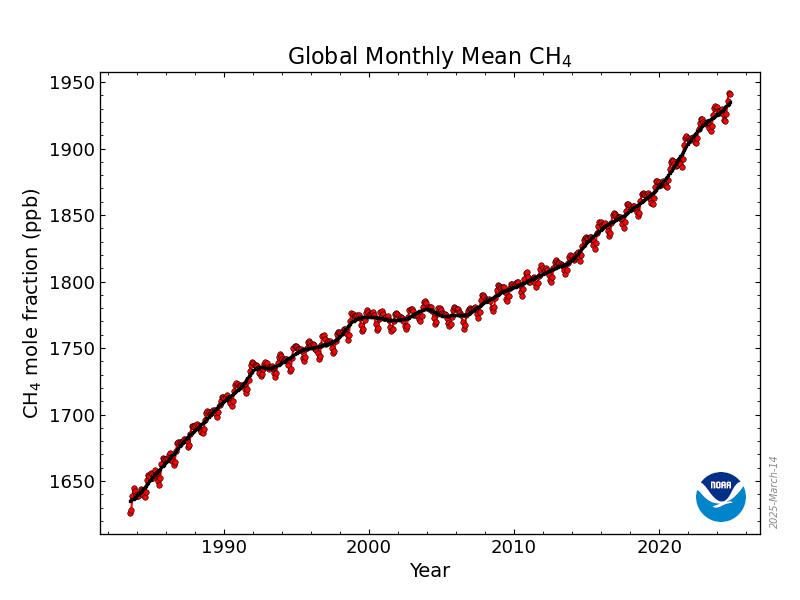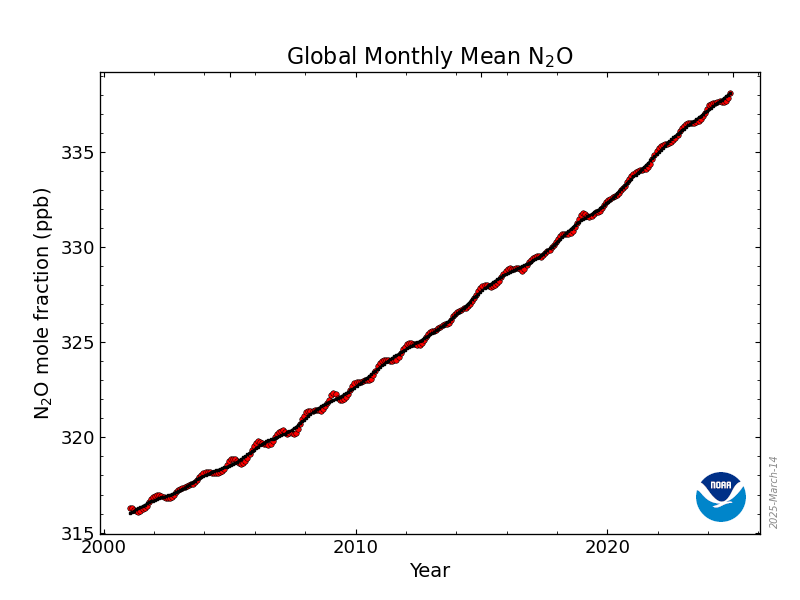We have heard in the media that we have made progress when it comes to climate change – basically because solar and wind energy is becoming more common. Perhaps we should look at how well we have performed. Since you cannot know how well you are doing unless you measure, we can look at the level of CO2 in the atmosphere.

It looks like we are not doing so well… yet. We need to at least see a leveling off from the current rise, or better yet a drop. The level of Carbon Dioxide (CO2) has been rising in our atmosphere since the 1800s and makes up about 82% of greenhouse gases, so it may be our best metric for determining how we are doing in solving the climate change problem. CO2 levels are measured by the National Oceanic & Atmospheric Administration in Mauna Loa Observatory, Hawaii, USA, far from pollution and industry. CO2’s half life of 120 years means that it accumulates in the atmosphere without disappearing. UN’s main attribution of human-generated CO2 is burning of fossil fuels, for transportation and electricity generation. Recent research shows that our huge amount of livestock also generate a lot of CO2 just through breathing, roughly 13.7% of world CO2 (Goodland and Anhang, 2009). Reducing carbon emissions require reducing our fossil fuel use, but reforesting agricultural lands could also help in reducing CO2 levels. We can and must do better for younger generations of humans, wildlife, and the Earth. But perhaps we are doing better with other grenhouse gases, such as methane (CH4)?

Well, it looks like we aren’t doing that well with methane either – yet. The black line above shows the smoothed yearly average, which is still climbing upward. Methane (CH4) makes up about 10% of greenhouse gases. Methane is a more potent but less long-lived greenhouse gas with 30 times the CO2 effect over 100 years (Pierce, 2016) but is 72 or 82 times more potent over a 20-year timeframe (Goodland and Anhang, 2009)(Wedderburn-Bisshopp, 2025) – and recent research places methane as responsible for 49-50% of Global Surface Air Temperature (Wedderburn-Bisshop, 2025). Methane has been primarily generated within agriculture from ruminants (cows, sheep, lamb), rice paddies, and the burning of vegetation like forests, bush, and crop residues. Drilling fossil fuels (gas, coal, oil) can result in methane leaks when not capped properly. Minor sources include landfills. A current notable concern is that as the climate warms and becomes wetter, growing tropical wetlands are producing more methane from overactive microbes, which appears to be climate change creating its own new issues (or ‘feedback loop’) (Pierce, 2016). Methods to reduce methane include eating less ruminants, reforesting, reducing the time rice paddies are wet (or eating less rice) and checking for uncapped fossil fuel leaks. We are not doing well with the methane metric either; but perhaps we are doing ok with a third major greenhouse gas: Nitrous Oxide…?

Well, this is depressing. We are not doing well with Nitrous Oxide (N2O) either. N2O is 300 times more potent than CO2 and lasts for 114 years and is about 6% of total greenhouse gases (Shankman, 2019). The main source is manure lagoons or other deep manure or fertilizer, which is also a source of methane. N2O converts to Nitrogen Oxide, which is also known to deplete the ozone layer. While we see from our metrics that we are not doing well, at least we have well-defined metrics we can monitor for in the future.
Why are we not doing well? We must also consider that developing nations want to live like developed nations, and the human population continues to grow. So there is a lot of work to be done to reduce greenhouse gases and whether you live in developing or developed nations, we ALL need to learn to live lifestyles generating fewer greenhouse gases.
Perhaps scientists do not agree that these higher levels of greenhouse gases will cause a problem? o learn what international scientists have agreed upon, follow the summary by the UN Intergovernmental Panel on Climate Change.
References:
Robert Goodland and Jeff Anhang (2009) Livestock and Climate Change. Worldwatch, November/December 2009, vol. 22, no. 6, p 10-19.
Fred Pearce (2016) What is Causing the Recent Rise in Methane Emissions? Yale School of the Environment. https://e360.yale.edu/features/methane_riddle_what_is_causing_the_rise_in_emissions.
Global Monitoring Laboratory (2024) Trends in CO2, CH4, N2O, SF6. National Oceanic & Atmospheric Administration, U.S. Dept. of Commerce. From: https://gml.noaa.gov/ccgg/trends_n2o/. Taken 3/29/2025.
Sabrina Shankman (2019) What Is Nitrous Oxide and Why Is It a Climate Threat? Inside Climate News, September 11, 2019. https://insideclimatenews.org/news/11092019/nitrous-oxide-climate-pollutant-explainer-greenhouse-gas-agriculture-livestock/
G Wedderburn-Bisshop (2025) Increased Transparency in Accounting Conventions Could Benefit Climate Policy, Preprints (In peer review) from: https://www.preprints.org/frontend/manuscript/47e2d20fd7846a4b68b490098df58780/download_pub
